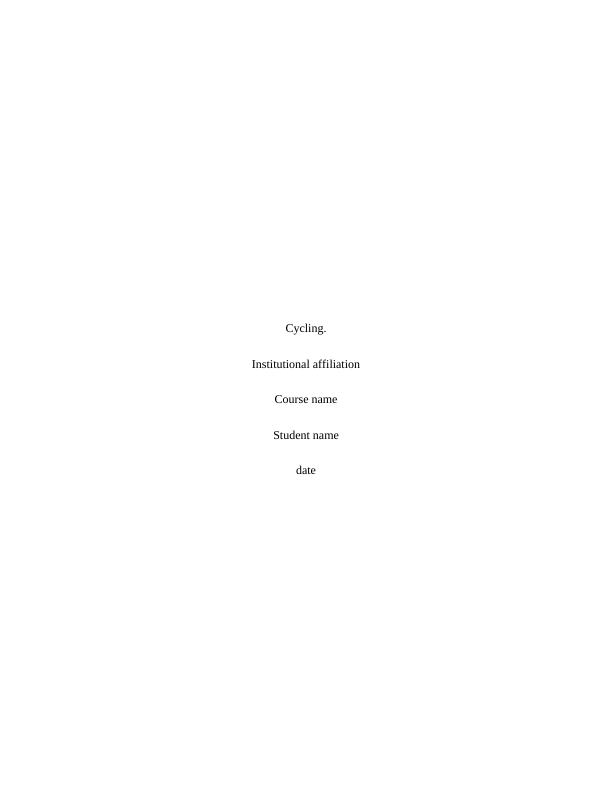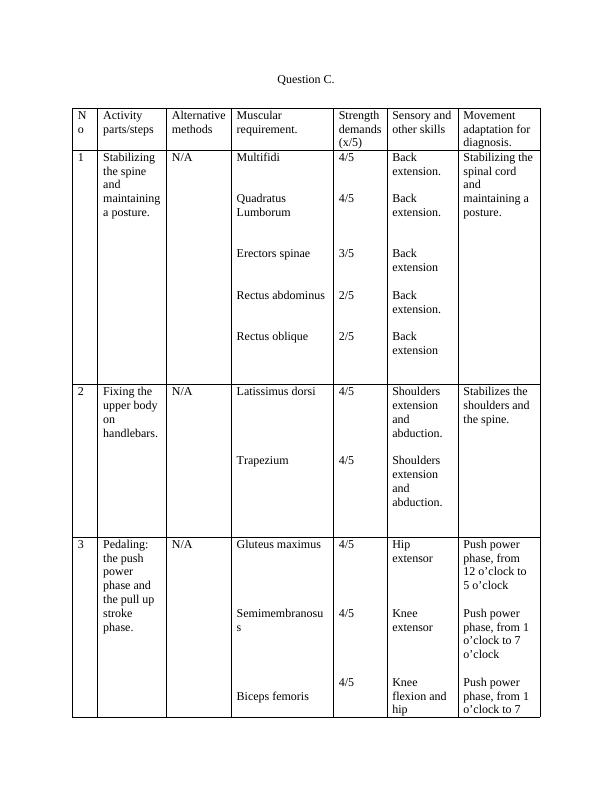Cycling: Muscles Used, Motions Involved, and Functional Implications
7 Pages776 Words491 Views
Added on 2023-06-11
About This Document
This article discusses the muscles used, motions involved, and functional implications of cycling. It also provides suggestions for training for easier or harder sessions based on the demands on the body. The article includes a table of muscles used during cycling and their strength demands.
Cycling: Muscles Used, Motions Involved, and Functional Implications
Added on 2023-06-11
ShareRelated Documents
End of preview
Want to access all the pages? Upload your documents or become a member.
Qualitative Analysis of the Preparatory Phase within the Standing Vertical Jump
|7
|1075
|1043



